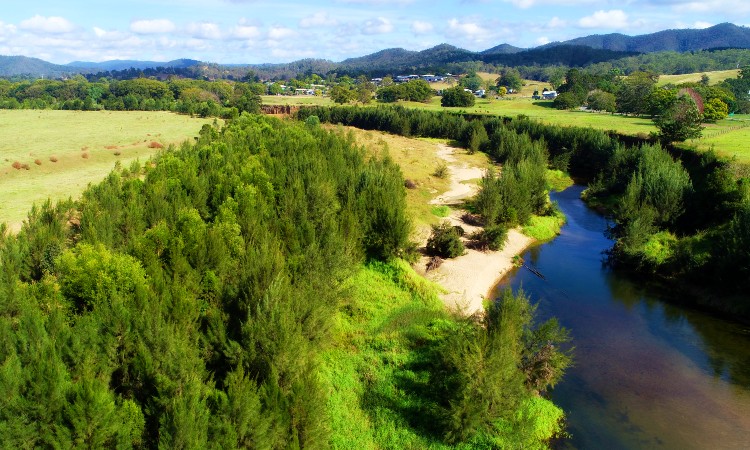

Restoring the Mary River
Riparian restoration project complete.
In 2020 council completed four-year riparian restoration project in the Mary Valley. The project targeted eight sites along a 1.7 km stretch of the Mary River for rehabilitation. These sites were in poor condition and badly eroded. They were identified as the sources of sediment flowing into the Mary River and ultimately out to the Great Barrier Reef.
Since European settlement, the Mary Valley has supported a range of agricultural uses. As a result, important bushland areas and vegetation along the river were lost. The vegetation lining a river or waterway is referred to as riparian habitat. It plays in important role in maintaining water quality and waterway health. The trees and shrubs along a waterway help stabilise the streambank and prevent erosion. Intact riparian habitats also filter nutrients from runoff before it enters a waterway.
Over the life of the project more than $500,000 was invested into the planting of 45,000 native plants. Project actions also included managing invasive plants and the establishment of erosion control structures. As part of the project council worked in partnership with local landholders and a range of other organisations.
The project has had many positive impacts on both water quality and biodiversity. The re-established vegetation has prevented further erosion from these sites which is contributing to waterway health improvements. This is good news for threatened species such as the Mary River Cod which only live in this river system.
Read the fully story in the 2019/20 Environment Levy Annual Report.
You may also be interested in
Biodiversity
Biodiversity is the variety of all life plants, animals, fungi and microorganisms.
Waterways and wetlands
Waterways and wetlands are our rivers, canals, lakes and water bodies.
7. Keeping our waterways and wetlands healthy
Healthy catchments, waterways and wetlands that support our lifestyle and livelihoods.